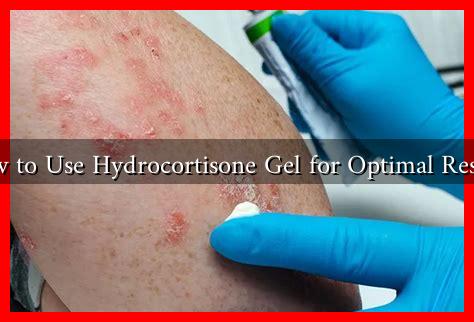-
Table of Contents
How to Use Hydrocortisone Gel for Optimal Results
Hydrocortisone gel is a topical corticosteroid that is widely used to treat various skin conditions, including eczema, dermatitis, insect bites, and rashes. Its anti-inflammatory properties help reduce redness, swelling, and itching, making it a go-to solution for many individuals seeking relief from skin irritations. However, to achieve optimal results, it is essential to understand how to use hydrocortisone gel effectively. This article will guide you through the best practices for using hydrocortisone gel, supported by research and expert recommendations.
Understanding Hydrocortisone Gel
Hydrocortisone is a synthetic form of cortisol, a hormone produced by the adrenal glands. When applied topically, it works by suppressing the immune response and reducing inflammation. Hydrocortisone gel is available in various strengths, typically ranging from 0.5% to 2.5%. The choice of strength depends on the severity of the condition being treated.
Indications for Use
Hydrocortisone gel is effective for a variety of skin conditions, including:
- Eczema
- Psoriasis
- Contact dermatitis
- Insect bites and stings
- Rashes caused by allergies
Before using hydrocortisone gel, it is crucial to consult with a healthcare professional to ensure it is appropriate for your specific condition.
Steps for Optimal Application
To maximize the benefits of hydrocortisone gel, follow these steps:
- Clean the Affected Area: Gently wash the area with mild soap and water. Pat it dry with a clean towel.
- Apply a Thin Layer: Squeeze a small amount of gel onto your fingertip and apply a thin layer directly to the affected area. Avoid using excessive amounts, as this can lead to skin thinning and other side effects.
- Massage Gently: Rub the gel into the skin gently until it is fully absorbed. This helps enhance its effectiveness.
- Wash Your Hands: After application, wash your hands thoroughly to avoid spreading the medication to other areas of your body or to others.
Frequency of Use
The frequency of application can vary based on the severity of the condition and the strength of the hydrocortisone gel. Generally, it is recommended to apply the gel:
- 1-2 times daily for mild conditions
- Up to 4 times daily for more severe conditions
Always follow your healthcare provider’s instructions regarding the duration and frequency of use. Prolonged use can lead to side effects, including skin thinning and increased susceptibility to infections.
Potential Side Effects
While hydrocortisone gel is generally safe for short-term use, it can cause side effects, especially with prolonged use. Common side effects include:
- Skin thinning
- Stretch marks
- Burning or itching sensation at the application site
- Increased hair growth in the treated area
If you experience severe side effects or signs of an allergic reaction, such as rash, itching, or difficulty breathing, seek medical attention immediately.
Case Studies and Statistics
A study published in the Journal of Dermatological Treatment found that patients with eczema who used hydrocortisone gel reported a significant reduction in symptoms within two weeks of treatment. Furthermore, a survey conducted by the American Academy of Dermatology revealed that 70% of respondents found topical corticosteroids effective in managing their skin conditions when used correctly.
Conclusion
Hydrocortisone gel can be an effective treatment for various skin conditions when used appropriately. By following the recommended application steps, understanding the frequency of use, and being aware of potential side effects, you can achieve optimal results. Always consult with a healthcare professional before starting any new treatment to ensure it is suitable for your specific needs. With the right approach, hydrocortisone gel can provide significant relief and improve your skin health.

